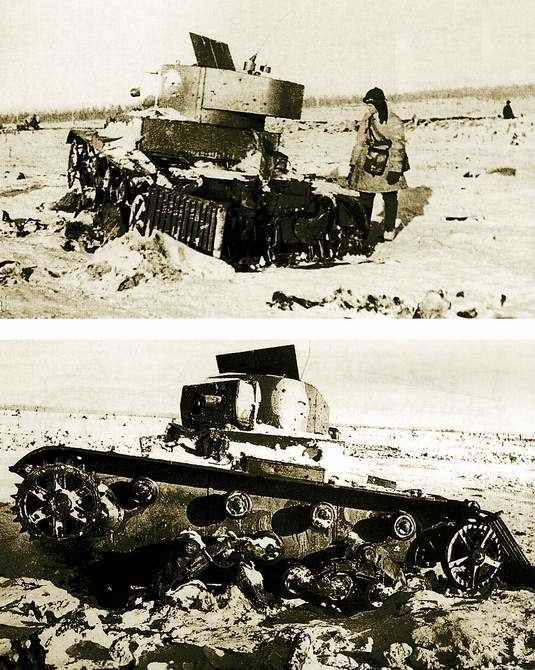 | ||
Teletanks were a series of wireless remotely controlled unmanned tanks produced in the Soviet Union in the 1930s and early 1940s so as to reduce combat risk to soldiers. They saw their first combat use in the Winter War, at the start of World War II. A teletank is controlled by radio from a control tank at a distance of 500–1,500 metres, the two constituting a telemechanical group. Teletanks were used by the Soviet Red Army in the Winter War, fielding at least two teletank battalions at the beginning of the World War II on Eastern Front.
Design
Teletanks were equipped with DT machine guns, flamethrowers, smoke canisters, and sometimes a special 200–700 kg time bomb in an armoured box, dropped by the tank near the enemy's fortifications and used to destroy bunkers up to four levels below ground. Teletanks were also designed to be capable of using chemical weapons, although they were not used in combat. Each teletank, depending on its model, was able to recognize sixteen to twenty-four different commands sent via radio on two possible frequencies to avoid interference and jamming. Teletanks were built based on T-18, T-26, T-38, BT-5 and BT-7 tanks.
Standard tactics were for the control tank (with radio transmitter and operator) to stay back as far as practicable while the teletank (TT) approached the enemy. The control tank would provide fire support as well as protection for the radio control operator. If the enemy was successful at seizing the teletank, the control tank crew was instructed to destroy it with its main gun. When not in combat the teletank was driven manually.
In addition to teletanks, there were also remotely controlled telecutters and teleplanes in the Red Army.
